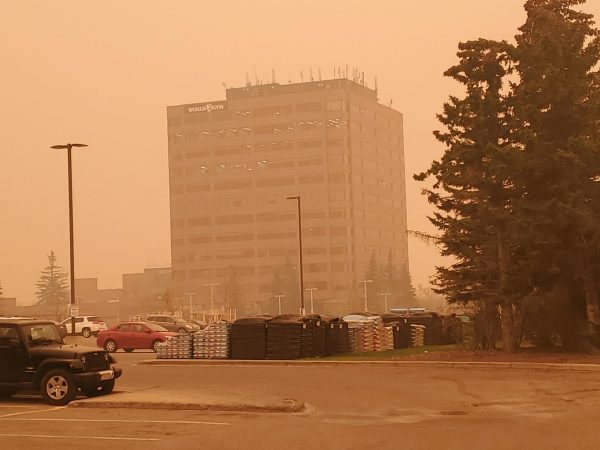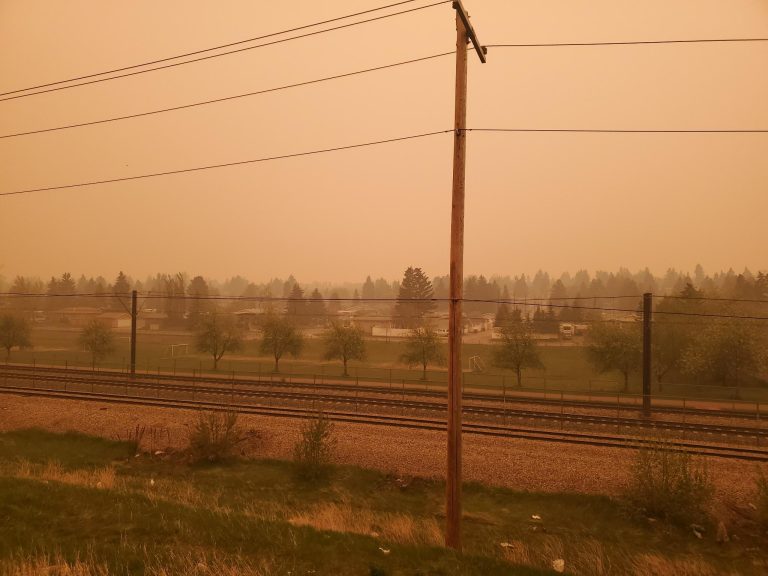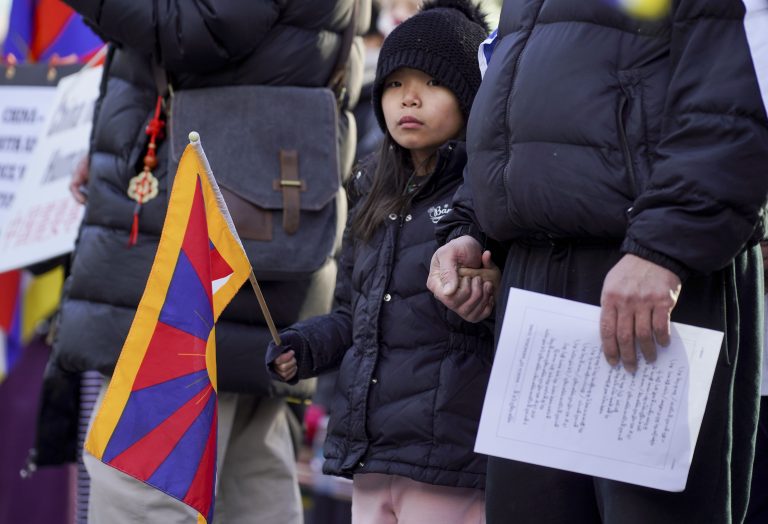With nearly 100 wildfires burning across the Canadian province of Alberta, air quality has plummeted across the province as smoke from the fires drifts into major urban areas, nearly blocking out the sun and threatening the health of millions.
On May 16, Environment Canada issued a special air quality statement for much of the province, a province that over 4.6 million people call home.
“Smoke is causing or expected to cause poor air quality and reduced visibility,” the weather agency said in an alert issued shortly after 7:30 a.m. on Tuesday, adding that conditions are expected to improve the following day.
In the interim, much of the province will have to endure a thick blanket of smoke that carries with it considerable health risks.
In Edmonton, Alberta’s capital, the Air Quality Index (AQHI) rating soared from three (low risk) on Monday to eight (high risk) by the early morning on Tuesday.
Success
You are now signed up for our newsletter
Success
Check your email to complete sign up
Most at risk are small children, pregnant women, the elderly, people with lung or heart conditions and people involved in strenuous outdoor work or sports, according to a government of Canada website.
“During heavy smoke conditions, all Canadians are at risk regardless of their age or health,” the site reads.
Mild symptoms of smoke exposure include sore and watery eyes, runny nose and sinus irritation, scratchy throat and mild coughing and headache.
More serious but less common symptoms include shortness of breath, wheezing, asthma attacks, severe cough, dizziness, chest pains and heart palpitations.
Anyone experiencing these symptoms is encouraged to speak with a healthcare professional or seek urgent medical attention.
“Drinking lots of water can help your body cope with the smoke,” authorities say and “If you have an HVAC system in your home, use the highest rated MERV filter for your system – ideally rated 13 or higher – and set the fan to recirculate air constantly. You can use a portable high-efficiency particulate air (HEPA) air cleaner. Keep your doors and windows closed if the temperature in your home is comfortable.”
Dozens of fires burn ‘out of control’
As of May 16, 87 wildfires continue to burn in the province’s northern and central regions with 24 of the fires being classified as “out of control” by Alberta Wildfire.
High winds are causing the fires to behave in an unpredictable manner with authorities saying the worst is yet to come.
“We are not out of the woods. I don’t believe that the worst is behind us. We need to be prepared and ensure our resources are best placed where that fire danger is going to be most extreme,” Christie Tucker, manager of the Alberta Wildfire information unit, told CTV News.
Three new evacuation orders were issued on Tuesday, adding to the more than 17,000 people who have had to evacuate their communities due to the fires. The new evacuation orders bring the total number of people evacuated to 19,342.
Colin Blair, executive director of the Alberta Emergency Management Agency told the Edmonton Journal, “These are trying times, and the coming days may be quite difficult. We are all doing all we can to protect communities at risk, but Albertans need to remain vigilant and closely follow updates on their current wildfire situation.”
An unprecedented situation
In Canada the wildfire season typically runs from early April to late October, however wildfires in early May are extremely rare; dozens of them igniting this early in the season is unprecedented.
The fires, that have burned more than 521,000 hectares of land so far, are being driven by unseasonably hot and dry conditions
Josee St-Onge, an Alberta wildfire information officer, told the Edmonton Journal that the risk of more fires igniting in the province is “extreme.”
“From what we can tell from the conditions that are awaiting us, with hot and dry weather persisting, we are going to continue to be challenged. So we haven’t seen a peak yet. Conditions will remain hot and dry and windy in the coming days, so we’re expecting more challenging conditions as we progress in this heat event,” she said.
There are more than 1,500 firefighters tackling the blazes, working alongside air tankers and helicopter crews. Help is coming from as far away as Oregon, Montana, Idaho, Washington, South Dakota and Colorado. Canada’s military is also involved.

Indigenous communities the most impacted
Alberta’s Indigenous communities are experiencing some of the most serious damage from the wildfires.
As of May 12, the fires have forced the evacuations of four First Nations communities in the province, as well as one Métis settlement. A dozen other Indigenous communities are on watch for wildfire threat, and are taking “pre-emptive measures,” Indigenous Services Canada said.
Dozens of homes have reportedly been lost in the Sturgeon Lake Cree Nation and Fox Lake in Little Red River Cree Nation.
Evacuees from Indigenous communities can face jurisdictional issues when attempting to access the help they need since reserves in Canada receive assistance from the federal government, not the provincial government which is in charge of emergency management.
Amy Cardinal, a Parks Canada Indigenous fire specialist, who created an evacuation guide in 2021 specially tailored for the Indigenous community told CBC’s Edmonton AM last week, “For First Nations and Métis communities, what makes it especially hard is that lots of them are transported quite a ways away from their home community,” adding that, “Another thing is food. Especially as lots of communities rely on traditional food sources, and suddenly they’re eating a much more western diet.”
“It’s really been an emotional roller-coaster here,” Gary Moostoos, an evacuee from the Sturgeon Lake Cree Nation told the CBC, adding that “We all experience those feelings together. You go out and sit with the people that are at your hotel, the Elders, we all look after each other.”
Moostoos said key parts of his community and culture are being lost.
“At the reserve, we have our own areas that we live in, it’s like clusters of families. And within those clusters, we also have the environment around us … especially the medicines and the berry bushes that we grew up in — all those are gone,” he said.
Dave Lamouche, an Alberta Métis Settlement Council president, who’s community is under an evacuation order, told the CBC about the loss some in his community have suffered.
“There’s one, he lost everything. His trapping equipment and guns, his hunting supplies — really devastating, life-altering situation, absolutely.”













